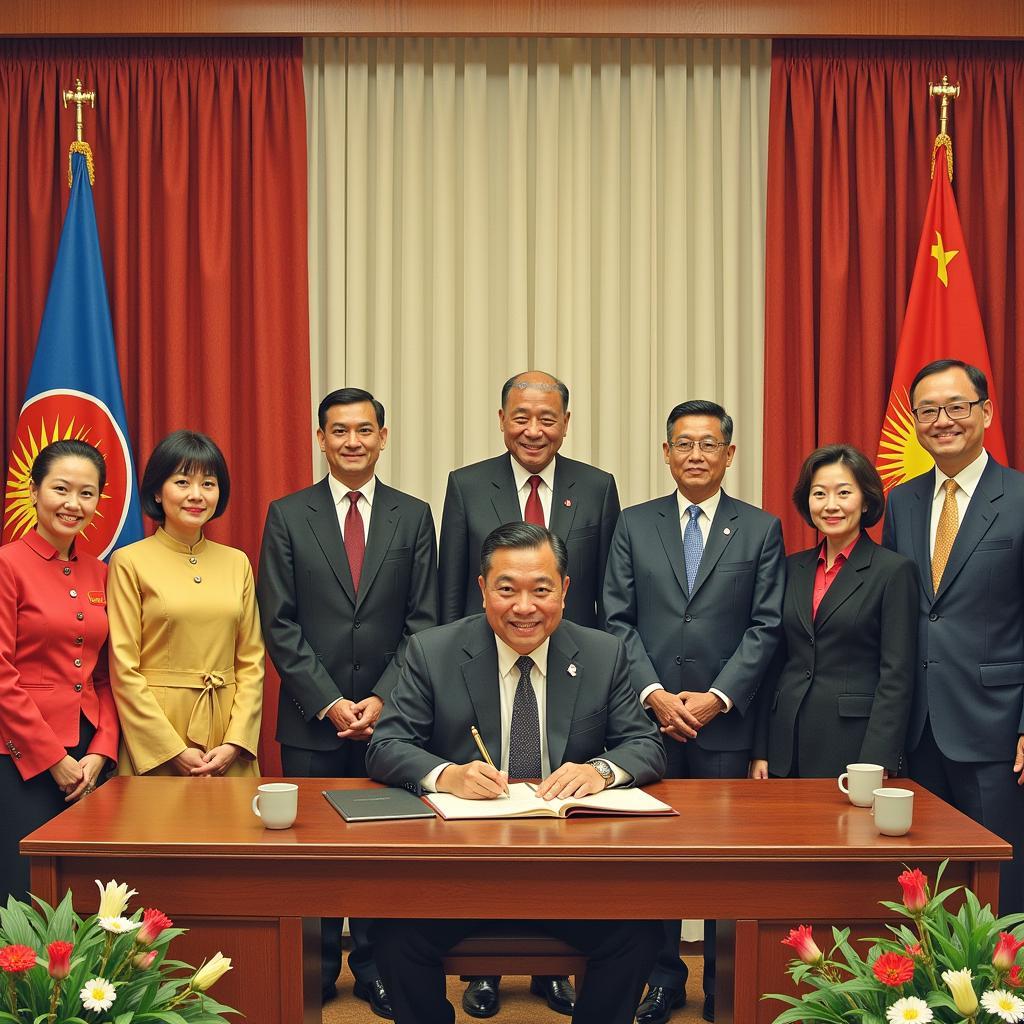ASEAN, the Association of Southeast Asian Nations, officially came into being in 1967. But the seeds of cooperation were sown almost a decade earlier, driven by the complex geopolitical landscape of the 1950s and early 1960s. Understanding this period, “ASEAN 9 years before it happened,” is crucial to appreciating the organization’s evolution and its enduring relevance today.
The post-colonial era saw Southeast Asia grapple with newly found independence, the Cold War’s ideological divide, and simmering regional tensions. The formation of ASA (Association of Southeast Asia) in 1961, comprising Malaya, the Philippines, and Thailand, was a significant precursor to ASEAN. ASA, though limited in scope, demonstrated a burgeoning recognition of the benefits of regional cooperation. It tackled shared challenges in areas like economic development, scientific advancement, and social progress, paving the way for a broader, more inclusive regional organization. The desire for stability and the shared aspiration for a peaceful and prosperous Southeast Asia fueled the momentum towards a more robust regional bloc.
The Precursors to ASEAN: Laying the Foundation
Several key factors contributed to the formation of a regional organization in Southeast Asia almost a decade before ASEAN officially emerged. The newly independent nations were eager to establish their place on the world stage and recognized the power of collective bargaining. The threat of communist expansion loomed large, creating a shared security concern that propelled nations towards collaborative defense strategies.
- The Cold War Context: The Cold War significantly influenced the political landscape of Southeast Asia, pushing nations to seek alliances and partnerships for security and stability.
- The Emergence of ASA: ASA’s formation in 1961 served as a testing ground for regional cooperation, providing valuable lessons and establishing a framework for future collaborations.
- Shared Economic Aspirations: The desire for economic growth and development was a unifying factor, encouraging nations to explore joint ventures and trade agreements.
From ASA to ASEAN: Expanding the Vision
The transition from ASA to ASEAN marked a significant expansion in both membership and scope. Indonesia, Singapore, along with Malaya, the Philippines and Thailand, recognized the need for a more inclusive and comprehensive regional organization. The Bangkok Declaration of 1967 formalized the establishment of ASEAN, laying the groundwork for a future of shared prosperity and regional stability.
- Inclusion of Indonesia and Singapore: The addition of these key players broadened ASEAN’s reach and influence, transforming it into a more representative regional body.
- The Bangkok Declaration: This landmark document articulated the shared vision and objectives of ASEAN, setting the stage for decades of collaborative efforts.
- Focus on Regional Security: ASEAN’s commitment to regional security played a crucial role in mitigating conflict and promoting peaceful resolutions to disputes.
Why “ASEAN 9 Years Before It Happened” Matters
Understanding the pre-ASEAN period is essential for grasping the motivations and aspirations that shaped the organization. It highlights the foresight and determination of the founding members who recognized the importance of regional unity. This period provides valuable context for analyzing ASEAN’s evolution and its enduring impact on Southeast Asia.
- Historical Context: Examining the historical backdrop reveals the complex factors that led to the creation of ASEAN, providing insights into the organization’s core values.
- Lessons Learned: The experiences of ASA, including its successes and limitations, informed the development of ASEAN’s structure and operational framework.
- Long-Term Vision: The pre-ASEAN period demonstrates the long-term vision of the founding members, who envisioned a united and prosperous Southeast Asia.
 Signing of the Bangkok Declaration
Signing of the Bangkok Declaration
Conclusion: A Legacy of Cooperation
The nine years leading up to the formal establishment of ASEAN were crucial in laying the groundwork for regional cooperation. This period, characterized by a complex interplay of geopolitical factors and shared aspirations, highlights the foresight and determination of the founding members. “ASEAN 9 years before it happened” provides a vital lens through which to understand the organization’s journey and its ongoing commitment to a peaceful, prosperous, and unified Southeast Asia.
FAQs:
- What was ASA?
- Why was ASEAN formed?
- What were the main challenges faced by Southeast Asian nations in the 1950s and 1960s?
- What is the significance of the Bangkok Declaration?
- How did the Cold War influence the formation of ASEAN?
- What are the key principles of ASEAN?
- How has ASEAN evolved since its inception?
For further insights into related topics, explore our article on asea polarity reversal.
Need more assistance? Contact us 24/7: Phone: 0369020373, Email: aseanmediadirectory@gmail.com or visit us at: Thôn Ngọc Liễn, Hiệp Hòa, Bắc Giang, Việt Nam. We’re here to help!

